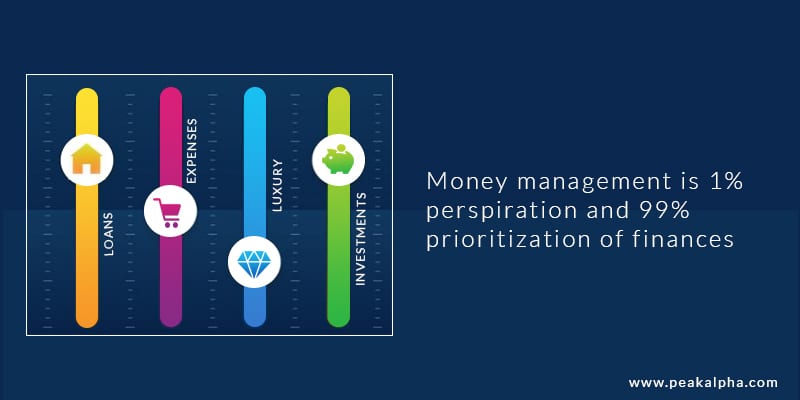- November 4, 2019
- Posted by: peakalpha2023
- Category: Livemint

We worry about inconsequential stuff while the big spends often slink away from our gaze
I can catch the minutest numerical or grammatical error even when I read through reports in a jiffy. I enjoy my bread toasted just the right shade of brown. I like my bedspreads laid without a single wrinkle, and I whack my cushions into submission, so they stand with military attention on my sofa. I know some of this behaviour is bordering on obsessive-compulsive disorder, but I get why people split hair about the most prosaic things. Sweating the small stuff works well for all the above reasons but works dismally when it comes to money.
I spent a frustrating afternoon witnessing a volley of heated words between a couple (my clients) over their grocery bills. The husband whinged about the wife’s obsession with expensive organic food and the wife carped about the husband’s wasteful expenditure on takeouts and alcohol. “Man up, and buy a gym membership instead,” snapped the health-conscious wife, eyeing her husband’s growing beer belly.
Their budget had been blown by a princely sum of ₹7,000, barely 5% of their monthly routine expenses. I pounded my gavel (read paper weight) to bring order in my office. I nudged them to shift their gaze to some other expense heads they had conveniently overlooked. Rent had increased by 50%, credit card was nearly double their average monthly spend and the Galapagos vacation overshot the budget by 30%. Let’s not forget the new car. It was bought within budget, but who would have thought a souped up version, with fancy accoutrements, was a necessity.
This brings me back to my earlier point about how we expend enormous energy worrying about inconsequential stuff while the big spends are slinking away from our gaze. No amount of belt-tightening around the small stuff is going to make a dent compared to those big outflows. Food, for example, is only 7-10% of an average monthly spend, transportation 4%, utilities at 7%. The big spends are vacations or entertainment at about 20%, rent or home loan EMIs at 30%, and often unnecessary insurance premiums or other EMIs at nearly 15%. But we constantly split hair over optimizing the 4% or the 7% instead of focussing on the biggies.
Such behaviour extends to how people manage investments too. They obsess about how equity investments dropped by 2% between last month and this month or how dividends from some stock were lower or higher this year. Buying an insurance plan that is a few hundred rupees cheaper in premium but compromising on the company quality; negotiating the price of onions but ignoring an underperforming investment portfolio; holding on to an uneconomical property in the hope of a price upswing (thereby ignoring the opportunity cost of selling and reinvesting in better asset classes); maintaining excessive cash in savings accounts instead of liquid funds; investing blindly without the guidance of a qualified adviser are some other examples.
The downswing in the equity markets and the liquidity crisis in the debt markets has investors wound up in knots. Should they pull out and invest in fixed deposits? Or in something they can touch and feel, like gold? The point here is that what falls also climbs up after a while, assuming the investment’s fundamental attributes are still sound. Gains or losses in the next month, six months or even a year are notional. But if you realize a loss by selling, you have booked the loss for good.
Think five years ahead. Will this matter to you then as much as it matters today? What if the markets moved up 10% after you redeemed, or the default papers in a bond fund got upgraded to a higher rating? Would that missed opportunity not stress you more? If the worst is behind us, there is only an upside to look forward to. What is the point of locking the stable after the horse has bolted?
Instead, I wish people focused on what really moves the needle—housing cost, mortgages, expenditure on transportation, and most importantly creation of a structured financial plan that helps you focus on things that matter, be it with regards to expense management or investment management. You will often be surprised at the outcome of the plan—it’s possible that you wouldn’t need to be frugal with your expenses. You may well be able to spend on what really matters to you such as expensive vacations or better housing, without penny pinching. You can stop worrying about trivial expenses and instead enjoy the treasurable experiences of your life.
So next time the maid negotiates a ₹2,000 Diwali baksheesh, stop being a tightwad and give her ₹4,000 instead. It won’t dent your finances, you will win your maid’s loyalty, and she can stop sweating the small stuff too and buy herself a memorable experience.
